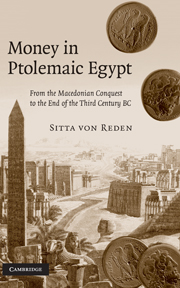INHALTSVERZEICHNIS ZPE 162 (2007)
Abascal, J. M. – Cebrián, R., Carthago Nova como caput viae. Dos miliarios de Tiberio de Huelves (Hispania citerior) 257–262
Austin, C. – Tchernetska, N. – Handley, E. W. – Horváth, L., New Readings in the Fragment of Hyperides’ Against Timandros from the Archimedes Palimpsest 1–4
Blank, D., The Life of Antiochus of Ascalon in Philodemus’ History of the Academy and a Tale of Two Letters 87–93
Cebrián, R. – Abascal, J. M., Carthago Nova como caput viae. Dos miliarios de Tiberio de Huelves (Hispania citerior) 257–262
Culasso Gastaldi, E., Il canestro di Anteros. Osservazioni in margine a SEG XXXII 216 125–131
Eck, W. – Pangerl, A., Neue Diplome für die Hilfstruppen von Britannia 223–234
Eck, W. – Pangerl, A., Weitere Militärdiplome für die mauretanischen Provinzen 235–247
Ferrari, F., Note al testo delle colonne II–VII del papiro di Derveni 203–211
Ferrari, F. – Prauscello, L., Demeter Chthonia and the Mountain Mother in a New Gold Tablet from Magoula Mati 193–202
Furley, W. D., A Lesson to All: Lykourgos’ Fate in the Tbilisi Hymn (P.Ross.Georg. I.11) 63–84
Giuseppetti, M., Callimaco, Inno a Delo 52–69, 80–97: Oxford, Bodleian Library, Ms. Gr. class. f 109 (P) 51–56
Gnilka, Chr., Zum Chrēsis-Mosaik in Antakya 95–98
Graf, F., Untimely Death, Witchcraft, and Divine Vengeance. A Reasoned Epigraphical Catalog 139–150
Graninger, D., Studies in the Cult of Artemis Throsia 151–164
Hagedorn, D., Datierung in den Sommer 175 oder 207 n. Chr.? 215–219
Handley, E. W. – Tchernetska, N. – Austin, C. – Horváth, L., New Readings in the Fragment of Hyperides’ Against Timandros from the Archimedes Palimpsest 1–4
Hawkins, Sh., IvE 106: ὁρειγυάδων καὶ ἐνέδρας 117–124
Hernández Muñoz, F. G., Los papiros y las arengas demosténicas (Or. I–XVII) 43–50
Horváth, L. – Tchernetska, N. – Handley, E. W. – Austin, C., New Readings in the Fragment of Hyperides’ Against Timandros
from the Archimedes Palimpsest 1–4
Juhel, P. – Temelkoski, D., Fragments de «boucliers macédoniens» au nom du roi Démétrios trouvés à Staro Bonče (République de Macédoine). Rapport préliminaire et présentation épigraphique 165–180
Lapini, W., Un’edizione posidippea dimenticata 61–62
Larson, S., Reassessing an Archaic Boiotian Dedication (Delphi Museum Inv. No. 3078) 99–106
Liu, J., The Era of Patavium Again 281–289
MacDonald, D., A Soldier’s Votive to Diana 279–280
MacDowell, D. M., Hereditary Sitesis in Fourth-Century Athens 111–113
Marchionni, R., Eine neue Inschrift des D. Fonteius Frontinianus aus Diana Veteranorum 290–292
Mattingly, H., Two Fifth-Century Attic Epigraphic Texts Revisited 107–110
Meier, M., Die erste Prätorianerpräfektur des Marinos von Apameia 293–296
Méndez Dosuna, J., Le skyphos de Satyros et le kelês de Dorilaos: une consultation oraculaire de Dodone (Lhôte n° 113) 181–187
Muhs, B. – Worp, K. A., Yet More Duplicate Mummy Labels 213–214
Muscolino, F., Gli studi epigrafici e archeologici di Anthony Askew e Thomas Blackburne a Taormina (1748–1749) 132–138
Nervegna, S., Staging Scenes or Plays? Theatrical Revivals of “Old” Greek Drama in Antiquity 14–42
Obsieger, H., Bemerkungen zu der Liebesprosa auf P. Erl. 4 = Nr. 7 Schubart 85–86
Pangerl, A. – Eck, W., Neue Diplome für die Hilfstruppen von Britannia 223–234
Pangerl, A. – Eck, W., Weitere Militärdiplome für die mauretanischen Provinzen 235–247
Prauscello, L. – Ferrari, F., Demeter Chthonia and the Mountain Mother in a New Gold Tablet from Magoula Mati 193–202
Rizzo, M. S. – Zambito, L., Novità epigrafiche siciliane. I bolli di contrada Cignana (Naro, Ag) 271–277
Schenke, G., Anweisungen zur Übergabe von Textilien und Weizen in O.Douch I 40 und 49 220–222
Sider, D., Simonides Epigram 3 FGE in P.Oxy. 31.2535 5–8
Speidel, M. A., Albata decursio – Ein kaiserliches Siegesmanöver. Zu einer neuen Inschrift aus Ankara 263–270
Tchernetska, N. – Handley, E. W. – Austin, C. – Horváth, L., New Readings in the Fragment of Hyperides’ Against Timandros from the Archimedes Palimpsest 1–4
Temelkoski, D. – Juhel, P., Fragments de «boucliers macédoniens» au nom du roi Démétrios trouvés à Staro Bonče (République de Macédoine). Rapport préliminaire et présentation épigraphique 165–180
Tsagalis, Chr. C., CEG 594 and Euripides’ Erechtheus 9–13
Vinci, M., Un nuovo epitaffio in greco della Sicilia di età alto-imperiale e il formulario con gli epiteti χρηστὸς καὶ ἅμεμπτος 188–192
Weiß, P., Weitere Militärdiplome für Soldaten in Mauretania Tingitana aus dem Balkanraum 249–256
Whitehorne, J., Posidippus 25 A–B and Ancient Life Expectancy 57–60
Worp, K. A. – Muhs, B., Yet More Duplicate Mummy Labels 213–214
Worthington, I., Encore IG II2 329 114–116
Zambito, L. – Rizzo, M. S., Novità epigrafiche siciliane. I bolli di contrada Cignana (Naro, Ag) 271–277
Corrigendum 94












